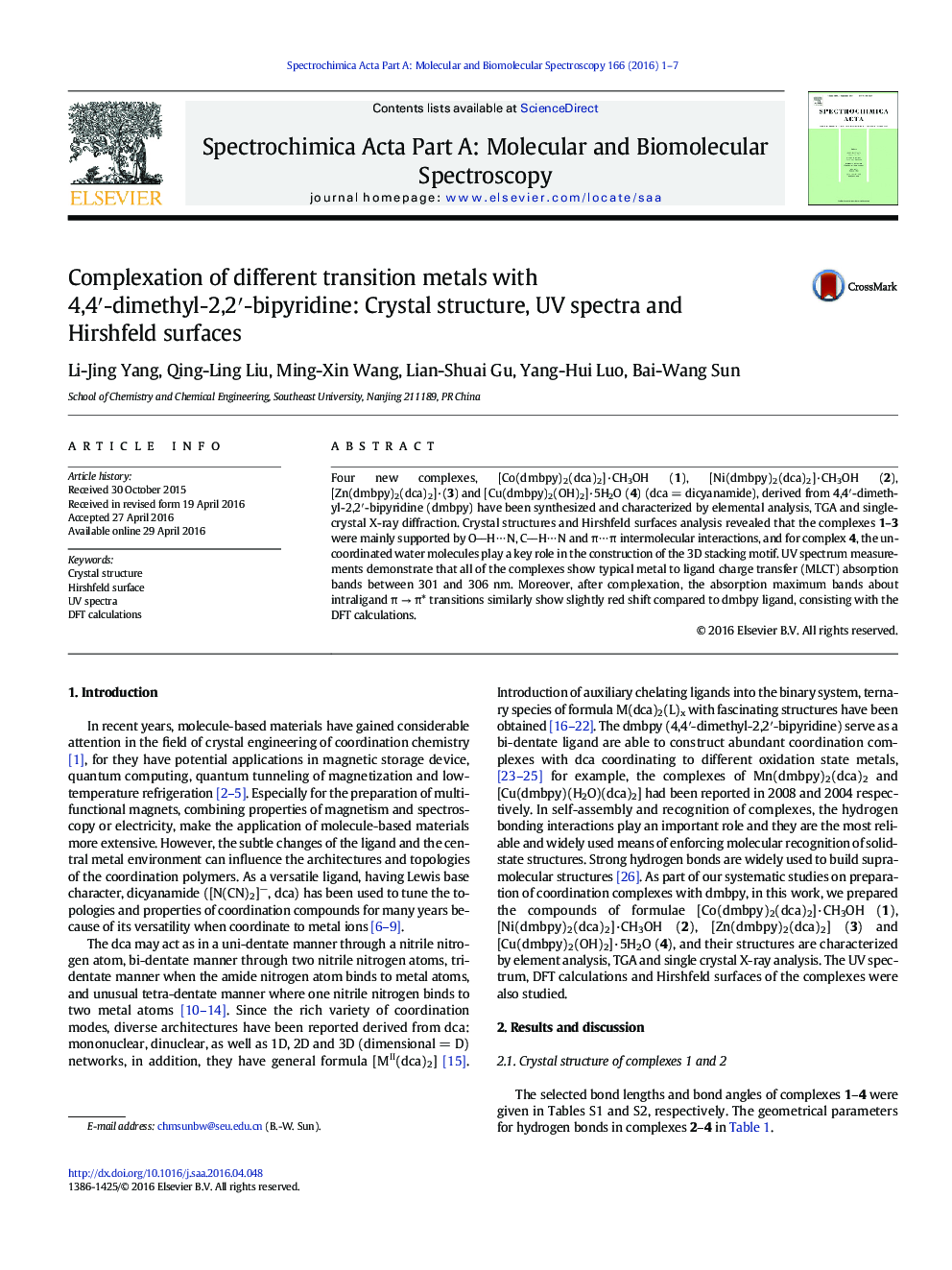| Article ID | Journal | Published Year | Pages | File Type |
|---|---|---|---|---|
| 1230638 | Spectrochimica Acta Part A: Molecular and Biomolecular Spectroscopy | 2016 | 7 Pages |
•Four complexes derived from dmbpy with different metal ions have been synthesized.•The single-crystal studies and Hirshfeld surfaces analysis reveal that the complexes 1 – 3 were mainly supported by π···π, O–H···N and C–H···N intermolecular interactions, and for complex 4, the uncoordinated water molecules play a key role in the construction of the 3D stacking motif.•UV spectrum measurements demonstrate that all of the complexes show typical MLCT absorption bands between 301 and 306 nm.
Four new complexes, [Co(dmbpy)2(dca)2]·CH3OH (1), [Ni(dmbpy)2(dca)2]·CH3OH (2), [Zn(dmbpy)2(dca)2]·(3) and [Cu(dmbpy)2(OH)2]·5H2O (4) (dca = dicyanamide), derived from 4,4′-dimethyl-2,2′-bipyridine (dmbpy) have been synthesized and characterized by elemental analysis, TGA and single-crystal X-ray diffraction. Crystal structures and Hirshfeld surfaces analysis revealed that the complexes 1–3 were mainly supported by OH ⋯ N, CH ⋯ N and π ⋯ π intermolecular interactions, and for complex 4, the uncoordinated water molecules play a key role in the construction of the 3D stacking motif. UV spectrum measurements demonstrate that all of the complexes show typical metal to ligand charge transfer (MLCT) absorption bands between 301 and 306 nm. Moreover, after complexation, the absorption maximum bands about intraligand π → π* transitions similarly show slightly red shift compared to dmbpy ligand, consisting with the DFT calculations.
Graphical abstractFigure optionsDownload full-size imageDownload as PowerPoint slide
